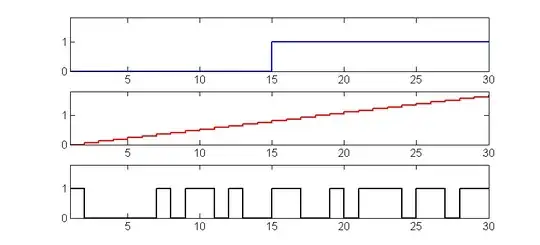I have three signals (below) each having the same standard deviation, however, are clearly very different temporally.

Is there some such metric that could be calculated for each of these signals to give an indication of how they vary over time, such as a measure of continuousness or intermittency if such a metric exists.
If possible, I would like to do this by calculating a single number for each of these signals, rather than windowing into smaller chunks.
Thanks